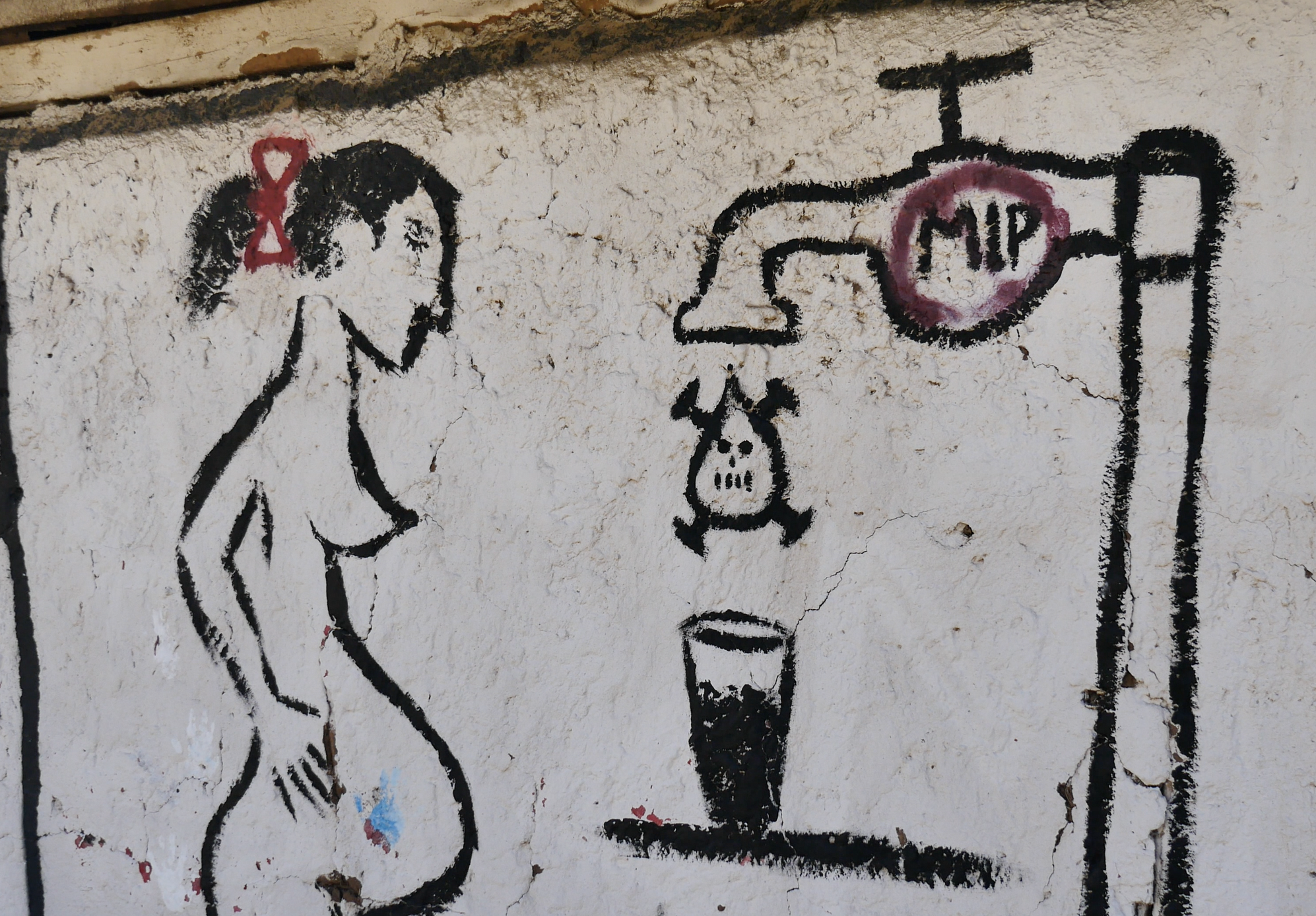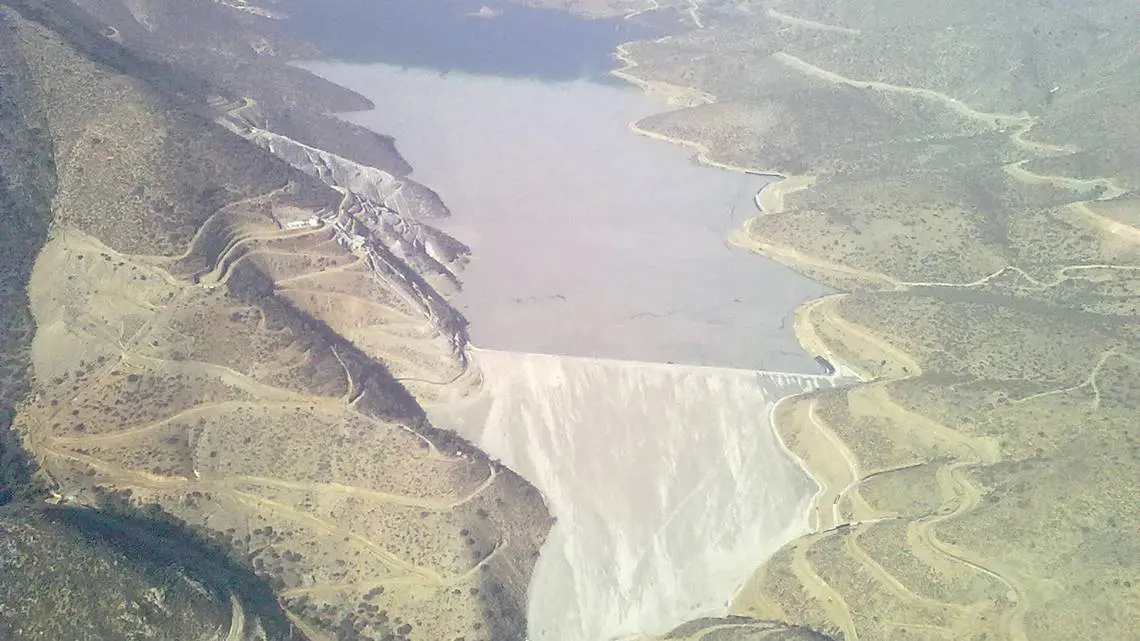
Read a Spanish version of this report by clicking here.
Alvaro Badillo can still remember the sound of the Pupio creek.
As a child growing up in a mud-brick home in the rural Chilean village of Caimanes, Badillo slept on a mattress of 20 sheep skins. He often fell asleep to the passing of the Pupio, recalling how it produced the same murmur the wind made when rustling through the leaves of the poplar trees.
Today, that sound is gone.
“To not hear the river, it’s like a cemetery,” says Badillo, 41. “There’s so much silence.”
It wasn’t supposed to be this way.
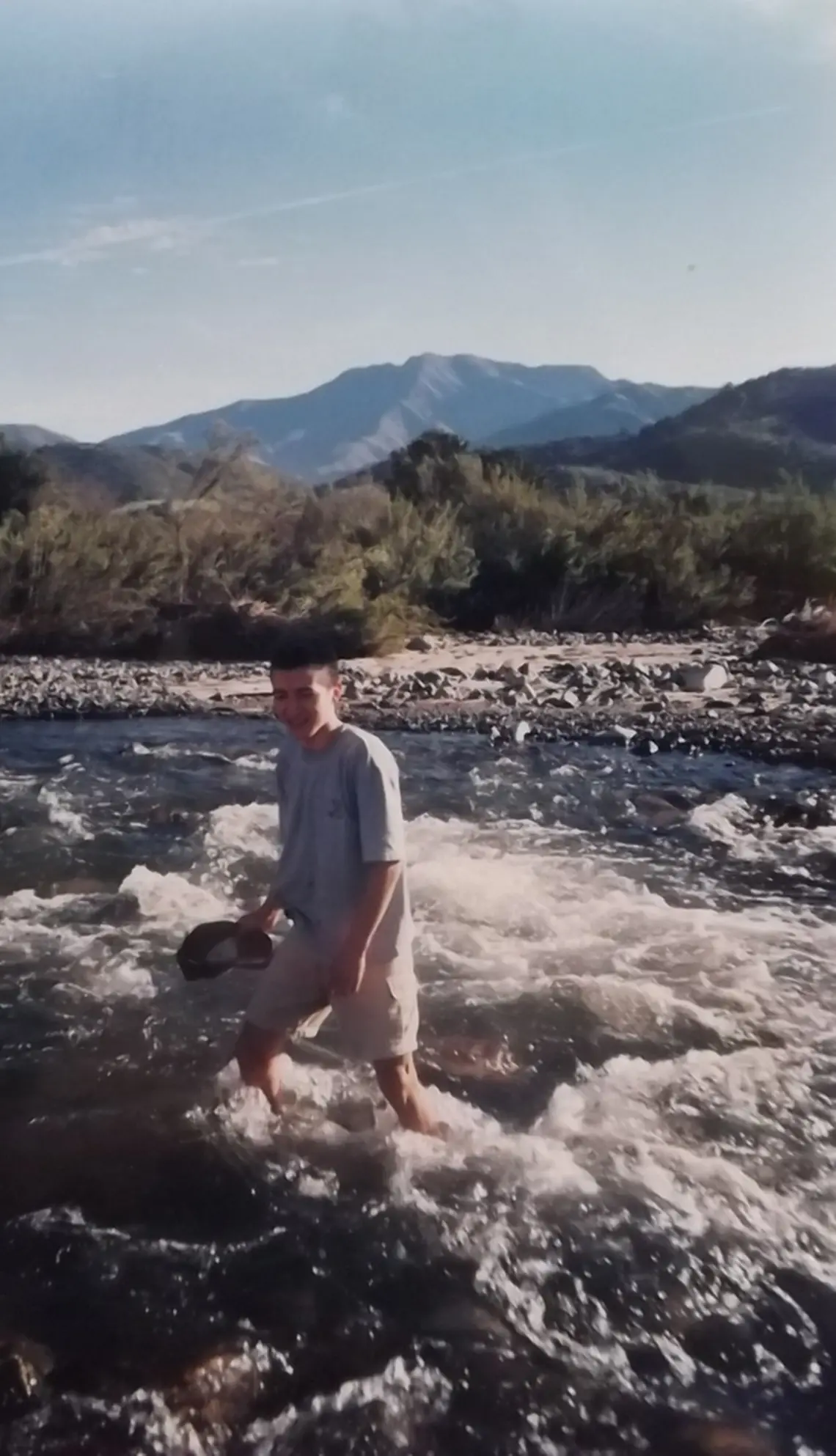
In 2014, Badillo and his neighbors won a landmark environmental lawsuit against Los Pelambres, the copper mine which had constructed a massive dam more than 770 feet high and nearly three-quarters of a mile wide upstream, cutting off the Pupio.

As a nonprofit journalism organization, we depend on your support to fund more than 170 reporting projects every year on critical global and local issues. Donate any amount today to become a Pulitzer Center Champion and receive exclusive benefits!
The Chilean Supreme Court ordered Los Pelambres to restore the “natural flow” of the Pupio or else demolish its gargantuan dam, capable of retaining more than 1.7 billion tons of liquified waste rock, known as tailings. The ruling made international headlines, as Los Pelambres was the pride of Antofagasta Plc., a mining conglomerate controlled by Chile’s richest family, the Luksics.
But, in spite of the ruling, the dam has remained standing after the company negotiated a controversial agreement with the majority of the villagers.
In shareholder reports and promotional materials, Los Pelambres and Antofagasta have lauded the agreement as the result of “democratic” and “transparent” dialogues with Caimanes residents.
Yet a review of dozens of hours of video footage of the meetings, along with records and testimony from participants, suggest that Los Pelambres’ negotiations with Caimanes led to broken promises and social rancor. Almost everyone involved in ensuring a fair and open negotiation for the community — from the lawyers representing the villagers to the well-respected NGO Transparency International observing the negotiations — appeared to bend to the influence of Los Pelambres.
“The settlement process was rigged in every way imaginable,” says Esteban Vilches, a lawyer representing Caimanes residents currently suing both their former lawyers and Los Pelambres.
Now Antofagasta and the Luksic family are encountering scrutiny in the U.S. over plans to develop the billion-dollar Twin Metals copper-nickel mine on the edge of a protected wilderness in Minnesota. The company touts its strong environmental track record and policies of sustainable development and community engagement, but opponents — concerned about Twin Metals’ potential impact on the region’s world famous waterways — point to the ordeal in Caimanes as a red flag.
In Chile, the story of Caimanes highlights the extreme imbalances of power faced by communities seeking accountability from a mining industry that exports a quarter of the world’s copper supply, as the country prepares to rewrite its constitution following protests against entrenched social and economic inequity.
“The system is made for an agreement to be reached,” says Alvaro Toro, an environmental lawyer affiliated with the Observatory of Latin American Water Conflicts. “But there are negotiations that are infeasible due to the great inequality of the parties.”
‘THE COMMUNITY AND THE WATER GO TOGETHER’
The village of Caimanes lies a few hours north of the capital of Santiago in the Pupio valley of northern central Chile, where the foothills of the Andes roll away in all directions. To the southeast, the Pupio creek historically emerged from the snowmelt and spring showers of the Mauro hills, passing beside Caimanes, and finally emptying into the Pacific 30 miles away.
“The community and the water go together,” Badillo says. “It is in everything this area needs.”
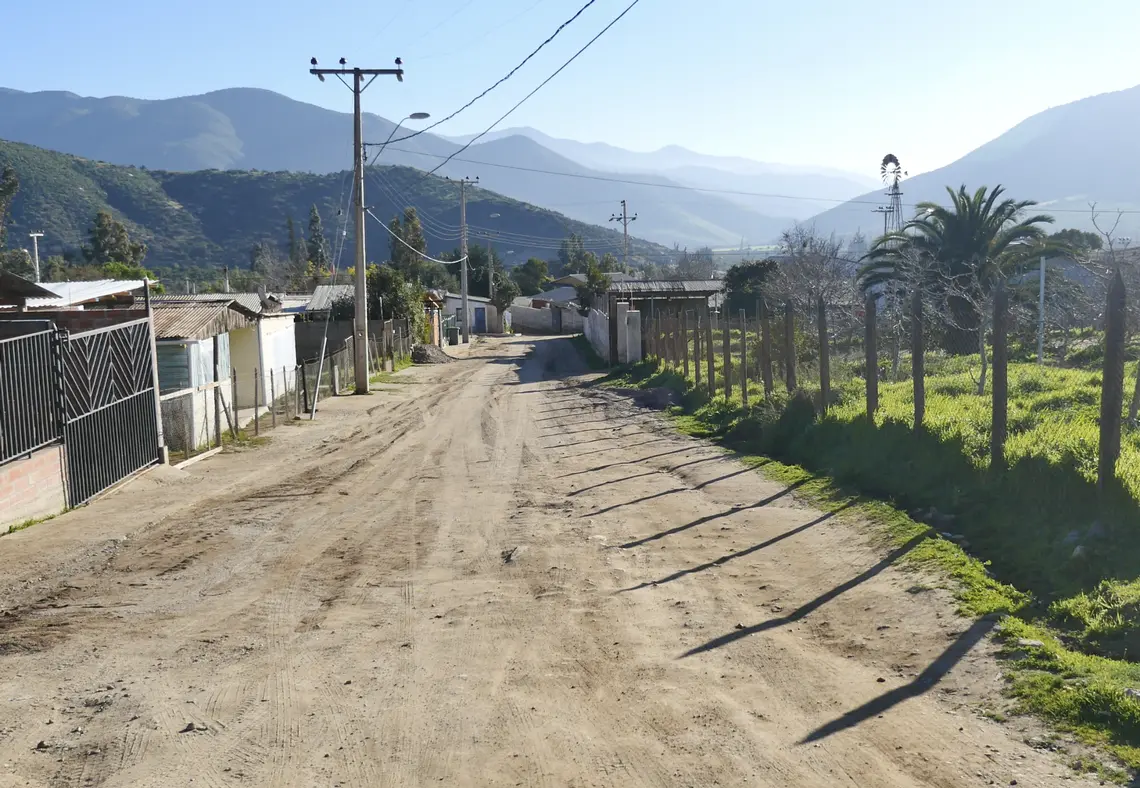
Like most of his neighbors, Badillo grew up in a family of proud farmers, raising livestock, keeping beehives and harvesting crops. It was difficult labor, but the community took pride in self-sufficiency, especially its informal water collective developed to direct the flow of the Pupio into irrigation channels, alongside wells supplying drinking water from the valley.
Although Los Pelambres says it does not rely on water from the Pupio for its operations, the completion of the Mauro dam in 2008 covered up key subterranean aquifers feeding the life force of the valley and choking the flow of the Pupio. Los Pelambres stated it would replace the lost water — amounting to millions of cubic meters — with two thin concrete channels drawing from a reservoir capturing rain and groundwater upstream from the dam. It was such a vast reduction that one Chilean magazine declared it akin to “exchanging an Olympic pool for an inflatable.”
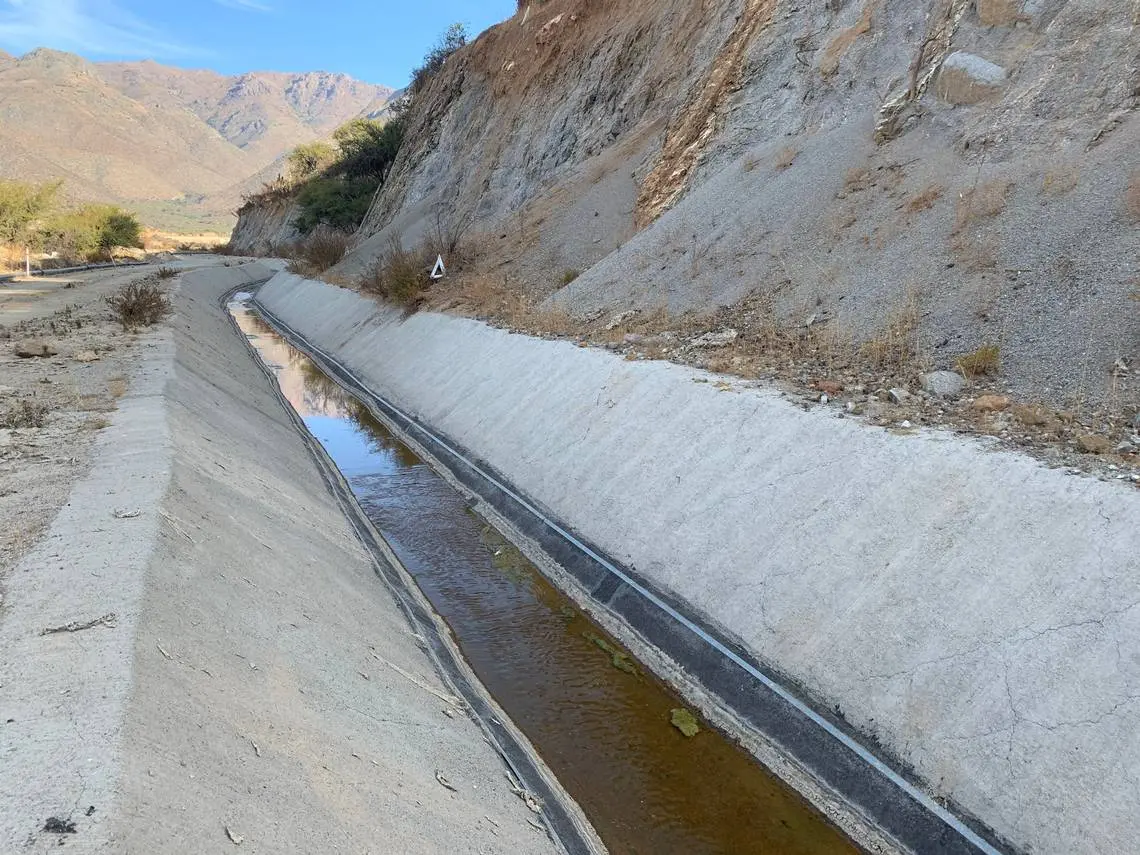
The company has blamed the loss of water on a years-long drought afflicting the region. However, Caimanes residents have documented that even when heavy rains do fall, the Pupio remains dry while other regional waterways surge with life.
The water-intensive process of producing the Mauro and other tailings dams has been described as baking a cake from toxic waste. Mines pour all their excess industrial waste into a large reservoir over many years, where the tailings slowly congeal into finely ground rubble mixed with sand and water. There are approximately 18,000 tailings dams worldwide, of which at least 3,500 remain active, and over decades their waste will harden. Despite the significant risk these dams pose to the environment and human lives around them, it was only last year that the mining industry released its first international standards for waste management, in collaboration with the United Nations.
The risk comes from the fact that beneath the surface of wet tailings dams like the Mauro, the contents remain unstable and prone to liquify — held back only by walls of sand and concrete — causing tailings dams to fail far more often than familiar water-retention dams. When they do collapse, the dams often devastate nearby communities. The rupture of Brazil’s Brumadinho dam in 2019 killed 270 people under a wave of sludge.
Even so, many residents initially saw the Mauro dam as the village’s ticket to a better economic future, providing an influx of well-paying jobs close to home. Whether they liked it or not, villagers such as Badillo, an electrician, were often forced to work for companies that had ties to Los Pelambres, the dominant economic force in the region.
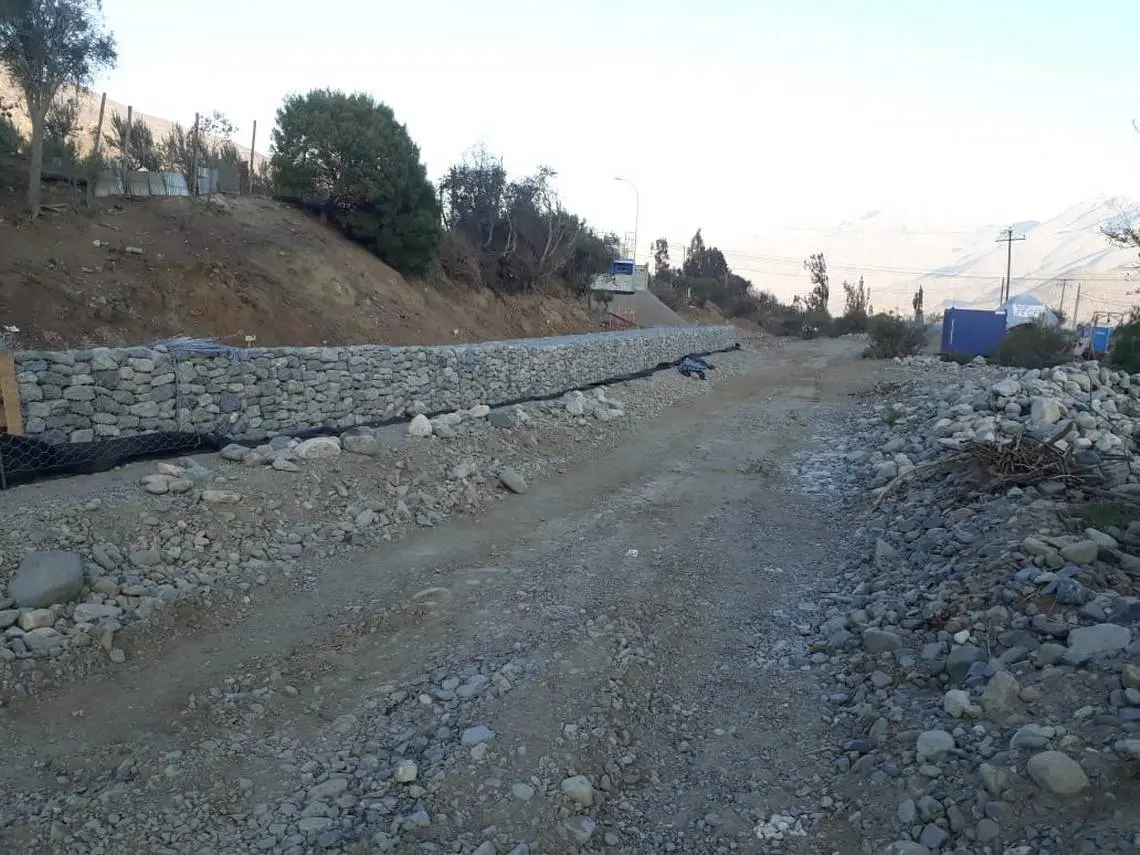
As the environmental ramifications of the dam became clearer, a nearby rancher who had formal rights to much of the water in the valley was the first to resist the dam’s construction. He filed a lawsuit to halt it from going forward and, with the help of Caimanes activists, won the case. But by then, much of the dam had already been constructed, so he agreed to a settlement in 2008, selling 80% of the valley’s water to the company for $23 million.
The sale was a legacy of Chile’s dictatorship-era constitution, allowing water rights, divorced from the land, to be bought and sold like real estate in a privatized system.
Though the Pupio’s water was now lost, the rancher passed on several million dollars to a small number of Caimanes residents who had led community organizations supporting his lawsuit. Many other members of those organizations, and the majority of the community, received nothing.
For one former activist family, the Ardiles, who previously earned a modest living through the production of goat cheese, the nearly $200,000 they received from the rancher for their support was life changing. They opened up a restaurant and a large hotel catering to employees of Los Pelambres Minerals working at the dam.
“I continue to be against [the dam] but today what can I do?” says Angelo Ardiles, who manages the restaurant. “If I keep thinking that way, I am going to die poor.”
A COURT VICTORY
Even as the Ardiles family gave up, hundreds of other Caimanes residents continued to fight against the Mauro dam — braving prosecution from local authorities, starving themselves during a weeks-long hunger strike and rallying behind a series of legal challenges to the dam over the years.
The fight climaxed in October 2014, when the Chilean Supreme Court ruled the dam’s construction violated the villagers’ constitutional rights. Declaring the waters of the Pupio valley to be a national asset, the court affirmed “the fundamental right of people to live in a healthy environment, free of any contamination,” ordering the “free” and “natural flow” of the river returned to the village. Los Pelambres had 30 days to deliver a plan to do so or else face “the total or partial demolition or removal” of the dam.
The company balked. The villagers held a roadblock and burned a satanic effigy of the billionaire Andrónico Luksic, demanding Los Pelambres comply. But the company didn’t budge.
Finally, the village’s lead lawyers, the husband and wife team of Ramon Ossa and Sandra Dagnino, intervened.
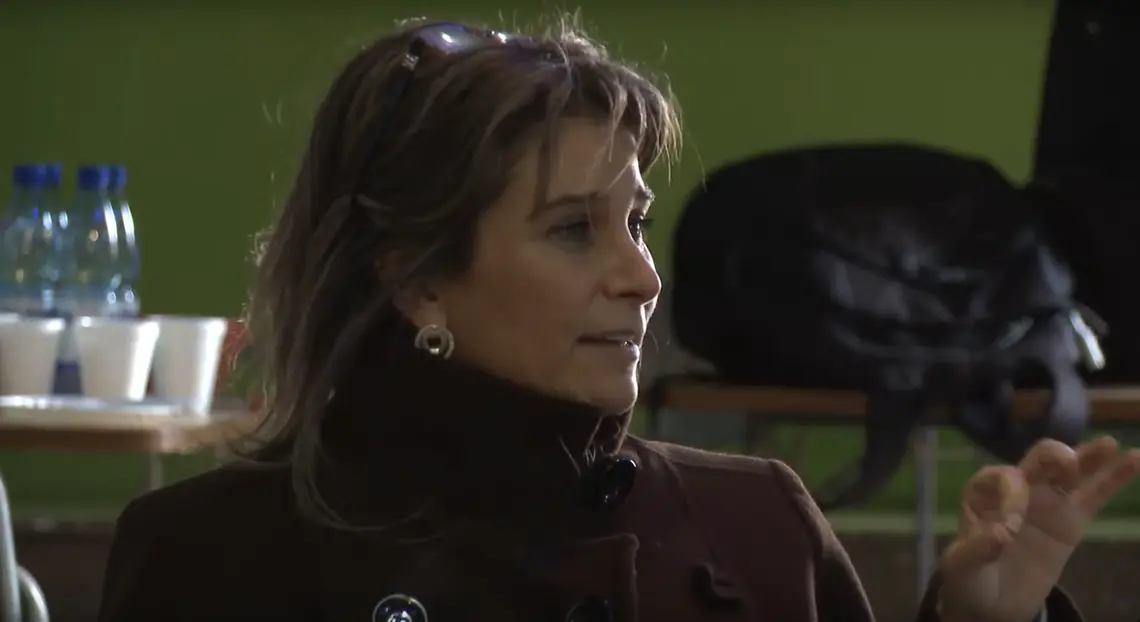
In April of 2015, six months after the Supreme Court’s ruling, Ossa gathered his clients together and informed them that the company appeared willing to negotiate.Though they’d won in court, the lawyers urged the villagers to consider the offer. It would take years for the dam to be demolished, they said, or to get any concessions from the company through the courts.
“What do people want?” Ossa asked his clients. “What is people’s motivation, actually?”
In the many years of fighting the dam, the people of Caimanes had stated they wanted two things: the return of their water and protection from the tailings.
Not only had the Pupio been cut off, but a prominent scientist from the University of Chile who conducted covert tests near the dam declared in 2012 that the valley’s groundwater was not safe for humans or animals to drink due to high levels of mercury and other heavy metals. The company and some public health authorities have denied these claims, though an environmental police agency also found dangerous levels of contamination.
And more urgently, in the event of the dam’s collapse, the Chilean Supreme Court warned that an avalanche of toxic waste would reach Caimanes within minutes, though the exact timing is contested. Although Chile is among the most seismic-prone places on earth, there was no clear emergency plan in place to protect the villagers. The company has said the dam is closely monitored and will not succumb to earthquakes.
“I believe that we [can] have a solution that could be as good as [what] the Supreme Court would offer,” Dagnino told her clients, urging the villagers to seek a settlement with Los Pelambres. “It’s a compromise of dreams and soul.”
Still, many of the villagers — especially those who had taken part in the lawsuit — were reluctant to stop now.
“Why have this discussion if we are already winning?” asked Alfredo Gallardo, one of the plaintiffs.
Even though Gallardo was one among several hundred residents who secured the legal victory, his lawyers opened up the discussions surrounding negotiations to the rest of the village in order to achieve what they marketed as a solution for the whole community.
As the negotiations between the lawyers and the company progressed, it became increasingly unclear who the official clients of Ossa, Dagnino and their associates were anymore. But, as is common in Chile, the lawyers had been given broad powers to negotiate on behalf of their clients, which made it more difficult for the original plaintiffs to influence the direction of the lawsuit.
In defending his role in the negotiations, Ossa would later state during one of the meetings: “With the powers we had, we could have negotiated in Santiago with the [company’s] lawyers and then brought [the villagers] only a final agreement and said ‘This is how it is.’ ”
NEGOTIATIONS BEGIN
The negotiations with Los Pelambres began in September 2015.
Alvaro Badillo was one of the few original activists who decided to negotiate, and in a series of presentations pushed the lawyers and the company to keep searching for ways to return the free flow of the water and protect the subterranean aquifers of the valley. Over the course of several months of negotiations, he was told again and again by his legal representatives that they could not succeed in applying the letter of the law to the dam.
“It would be a waste of time for everyone and a deception on our part to say that in this negotiation we will succeed, that the mine will renounce what they already have,” Dagnino told Badillo in front of Los Pelambres’ executives.
“We’ve been fighting all this time for water,” Badillo replied. “It would be a crime to lose it.”
“This discussion,” Dagnino replied, “is sterile.”
Dagnino told the villagers they would be getting an “infinitely better” deal than they would in the courts — a sudden change in position that was inexplicable to many in the village. Previously, in a meeting recorded on video, her team had assured residents that they’d win in court because the plan presented by Los Pelambres did not restore the river’s natural water flow.
The company could offer to build a thousand wells to replace the Pupio, the villagers were told, but this did not correspond to the court’s ruling.
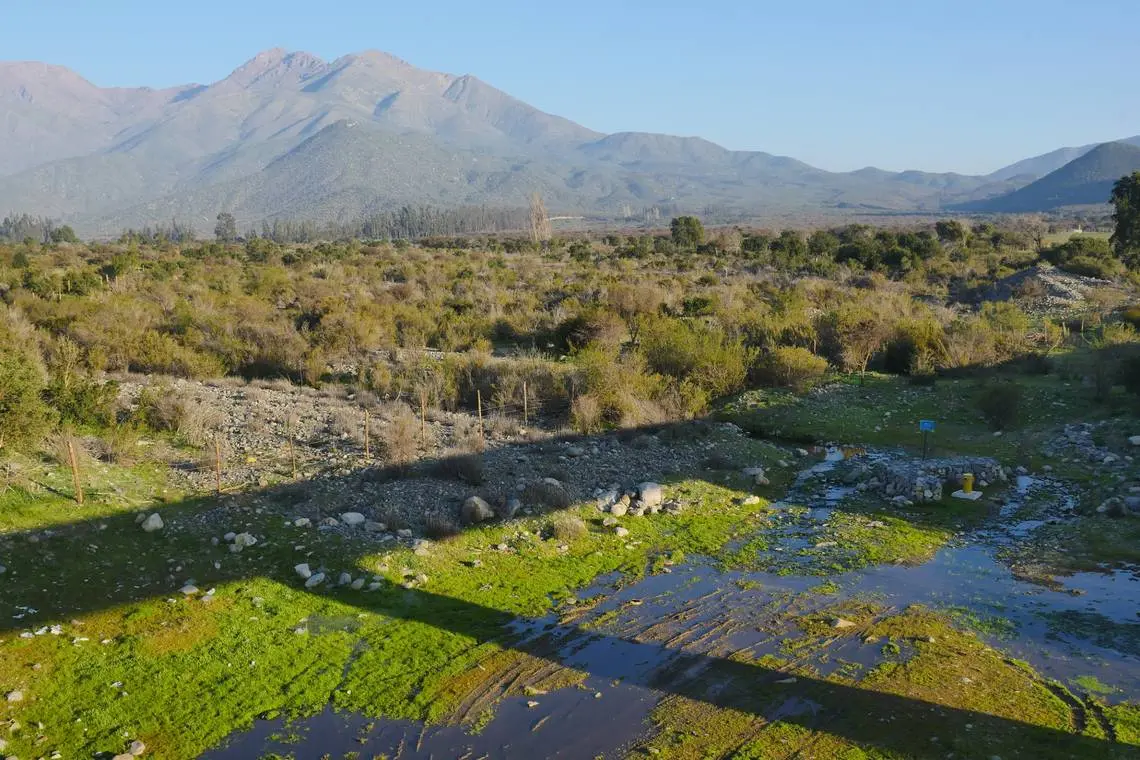
In the midst of negotiations, where and how Caimanes would be getting its water remained murky, as Badillo pointed out throughout the process. But the company was offering something else that was also in short supply — cash. In exchange for reaching a settlement out of court, Los Pelambres was willing to pay around 20 million Chilean pesos, or about $30,000 per family.
In November 2015, in the middle of negotiations, a tailings dam in Brazil collapsed and killed 19 people, leaving some Caimanes residents concerned that their only option would be to leave, and that what the company was offering wouldn’t be enough.
“You won’t be able to [leave] with only 20 million pesos,” one resident told the lawyers.
Delaying an agreement further could result in “zero pesos,” said Ossa, holding his index finger and thumb together to emphasize the point.
Midway through the negotiations, two of the original plaintiffs and dozens of their neighbors formally ended their representation with Ossa, Dagnino and their associates, hiring a new lawyer, Esteban Vilches, who began hosting his own assembly meetings to try to salvage the lawsuit to return water to the community.
“The agreement being offered is nothing,” Vilches told his new clients, in a meeting recorded on video. He had originally assisted Ossa and Dagnino but cut ties as he watched the process unfold.
According to shareholder reports, Antofagasta was then planning to spend more than a billion dollars to increase the capacity of Los Pelambres but was waiting to resolve the dam’s legal issues first, and Vilches believed his clients had substantial leverage to at least get a better deal.
When Vilches was able to attend the two final meetings, he pushed for the opportunity to openly debate the merits of the agreement with Ossa, Dagnino and their associate, Roberto Arroyo, in front of the whole community. An open debate would be held later, Vilches was told by the other lawyers and Pelambres representatives, in the recordings of the talks videotaped by Chile Transparente, the local branch of anti-corruption nonprofit Transparency International.
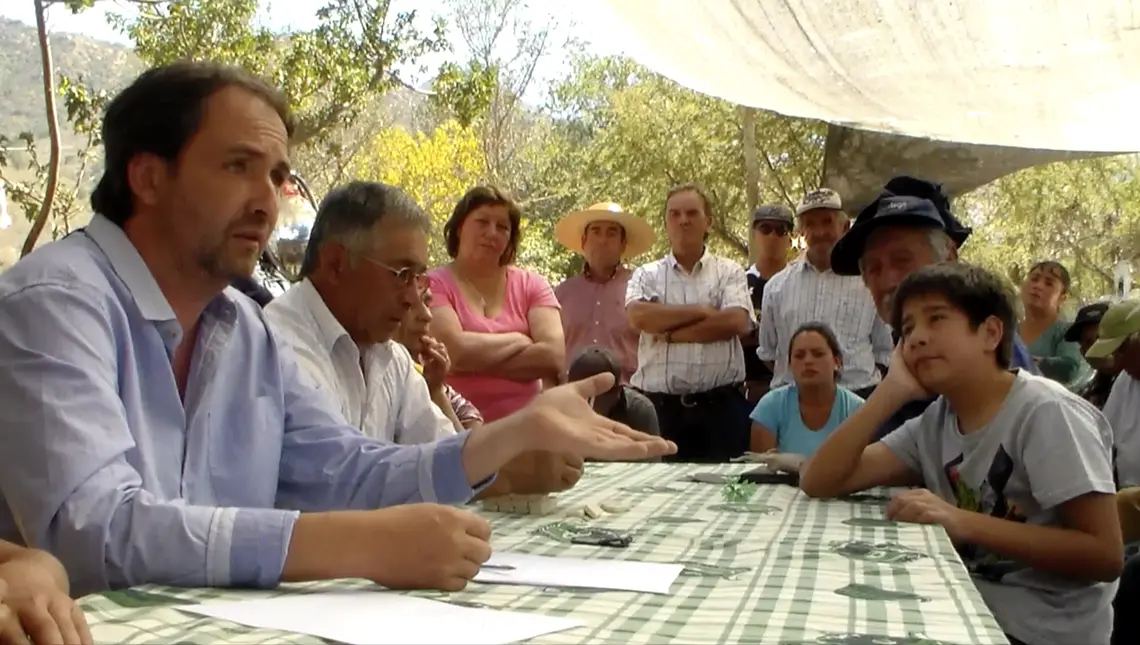
Antofagasta claims Vilches did not participate in debating the agreement, but Vilches says he was never given the chance. Either way, the debate never happened.
CONFLICTS OF INTEREST
Antofagasta signed a contract with Chile Transparente shortly after the Supreme Court’s ruling in 2014. The company gave the nonprofit more than $130,000 over the course of three years in exchange for being named a “cooperating member” of the organization. Antofagasta says that the group’s role as an observer in the negotiations “was not related to these payments.”
Most negotiations between communities and companies over development projects occur “in total darkness,” said Chile Transparente’s executive director, Alberto Precht, who envisioned his organization’s role as providing an unprecedented level of transparency in the process. Between November 2015 and January 2019, Los Pelambres paid the nonprofit 145,474,644 Chilean pesos (nearly $200,000) to record the negotiations with Caimanes, with videos and detailed minutes of the meetings posted on Chile Transparente’s website at the request of the community, according to Precht.
Although a company representative from Antofagasta Plc. says that the community was informed of the large financial relationship between the conglomerate, its mining company and Chile Transparente before the negotiations began, those in attendance at a meeting early on expressed shock and frustration after the relationship was explained by Elif Karakartal, a French observer for the Danielle Mitterrand Foundation recording the negotiations. The financial disclosure may have been publicly available on Chile Transparente’s website, but some Caimanes residents didn’t have internet access or were illiterate.
Many residents were also informed later by Karakartal during negotiations that the “independent technical advisor,” an engineer hired by Ossa and Dagnino and paid by Los Pelambres to help the community assess the company’s offer, was a contractor who had originally helped build the Mauro dam.
Karakartal, who also video-recorded the negotiations, documented these conflicts of interests and other perceived problems in three public letters to Chile Transparente.
Chile Transparente’s executive director responded that the group was serving merely as an “observer” and therefore was “not a guarantor of the process.”
A referendum of Caimanes villagers took place in early December 2015 in what residents would describe as a cold war atmosphere that included street fights, property damage and mean-spirited fliers targeting the personal lives of residents.
On the day of the vote, the agreement appeared to win by an overwhelming landslide. But only 58.85% of the 525 eligible Caimanes residents had voted, meaning a 70% quorum — one of the predetermined conditions explicitly agreed upon by the company and the community at the start of the negotiations — had not been met.
In a public letter, residents who were behind the lawsuits and declined to vote criticized the entire negotiation process as being “predefined” by the lawyers and the company without considering the needs of the community.
“We do not feel represented by the lawyers due to their insistence on making us approve things that go against our interest as a community,” the letter from the Caimanes residents stated. “They [Los Pelambres] intend to buy our wills and conscience with money and bury the future of our valley without even giving us the freedom to leave.”
COMMUNITY SIGNS DEAL
After the referendum, fliers emerged across the village advertising a meeting in late December “only for people who are about to embrace an agreement.”
Ossa and Dagnino collected 466 signatures from residents and sent them off in a letter to Los Pelambres pleading to move forward with an agreement based on the commitments established in the negotiations, and the company consented, so long as a majority of villagers signed in the end. Soon after, the third plaintiff in the lawsuit formally revoked the representation of Ossa and Dagnino, leaving the lawyers to try to negotiate an agreement for a lawsuit to which they no longer represented any official parties.
The lawyers and a handful of villagers, including former employees of Los Pelambres, formed a commission to hammer out the details and implementation of the agreement. Chile Transparente noted in its minutes that the commission was never officially validated or elected by the rest of the community prior to the agreement’s signing.
In the end, the company agreed to provide approximately $800,000 each year for 10 years to improve infrastructure in the community — such as solar-powered street lights and a fire station — while each family that signed would receive a one-time payment of about $41,500.
Ultimately, according to Antofagasta, 83% of the community chose to sign, conceding to resolve all existing legal conflicts with the company.
Many of those who signed the deal were elderly residents who made economic decisions with limited information.
Raquel Rojas, in her 80s, had previously lived off of less than $300 a month from her late husband’s pension.
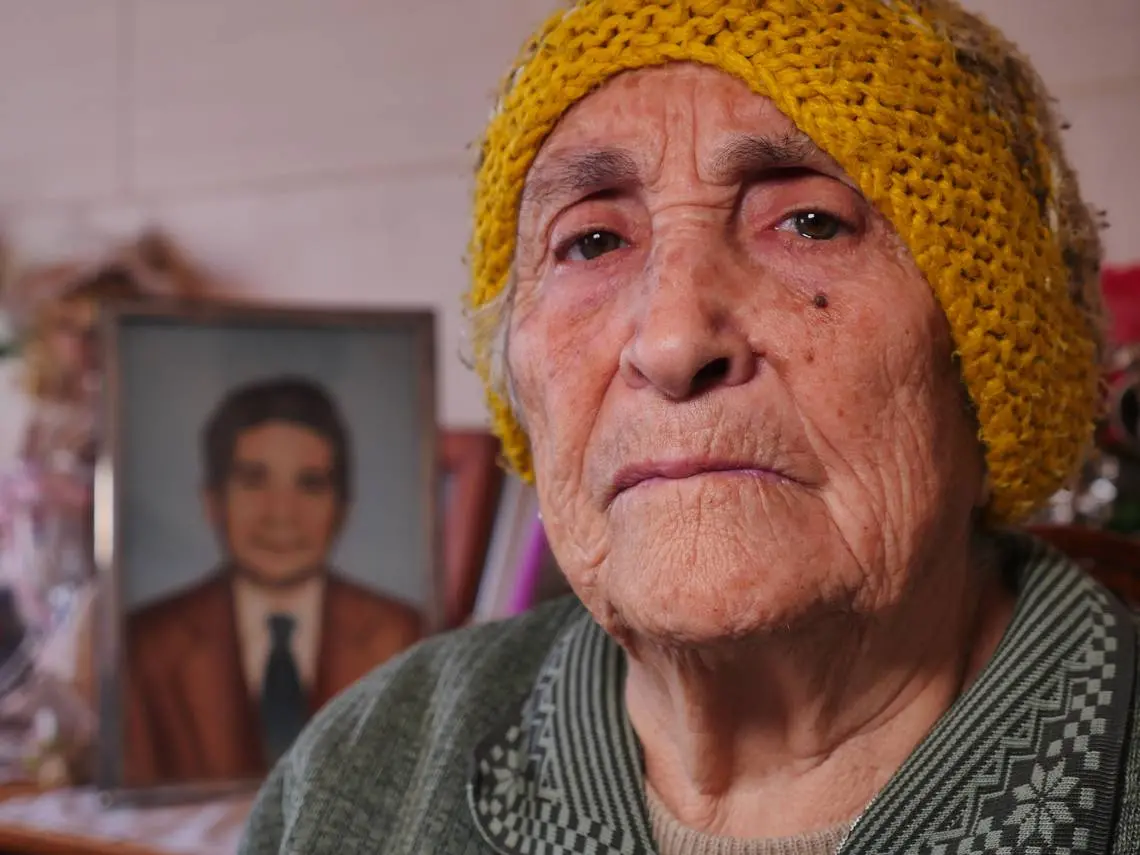
She decided to sign the agreement after members of the commission explained it to her and helped the illiterate Rojas write her name. With the money, Rojas bought new beds, installed a new kitchen and put the remainder in savings for her family.
“Now, I lack nothing,” she said, a year after signing. “At my age, you don’t need much money.”
Those who refused to sign were forced to live with the economic and social consequences of their decision. A single mother and her children were forced out of their home by a landlord serving on the commission as punishment for refusing to sign the agreement, families and spouses grew divided, and neighbors who had grown up alongside each other turned cold.
One resident in her 70s, Maria Soto, declined to sign both out of a sense of pride — believing the agreement unjust — and because she felt that it did not provide enough money for her to relocate and own property elsewhere.
“I don’t want to be here anymore,” Soto said. “But I don’t have the money to leave and I want to live in my own home.”
To supplement her deceased husband’s paltry pension, Soto spent her days washing dishes for $16 per eight-hour shift at the restaurant opened by the Ardiles family.
Maria Soto “is too old to be working, she shouldn’t be,” says the restaurant’s owner, Myrella Ardiles. “She made the wrong choice.”
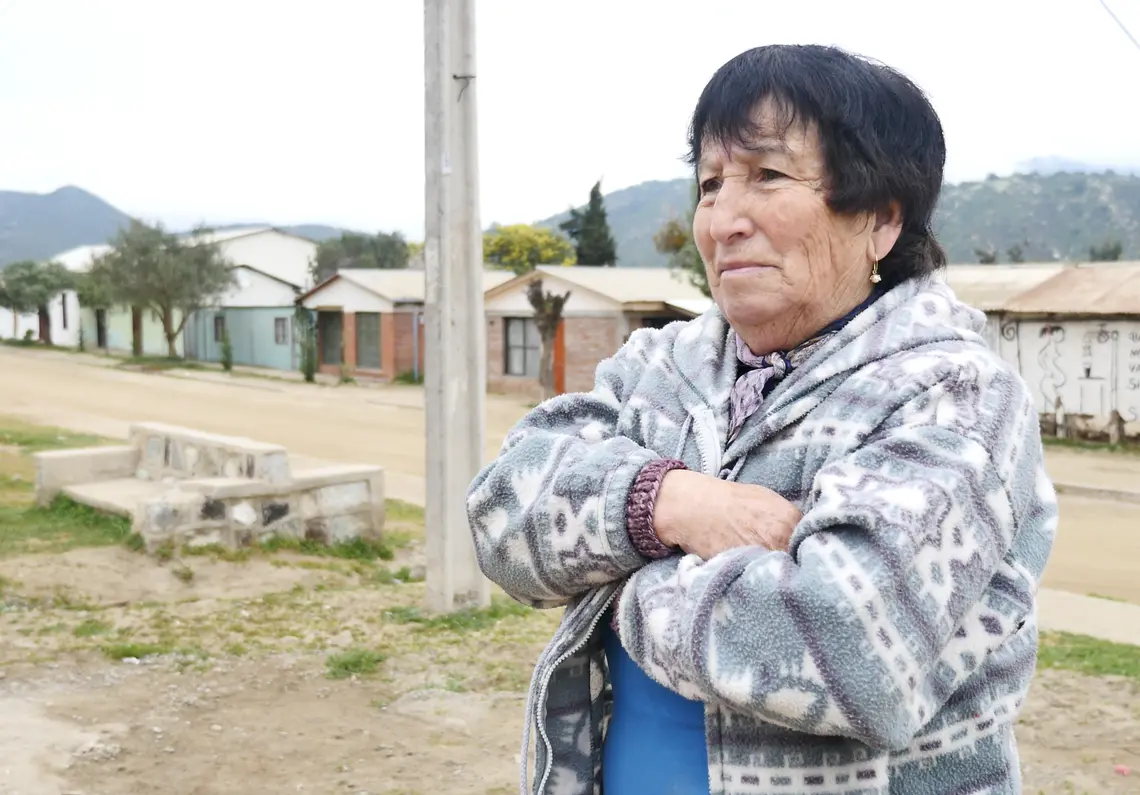
LAWYERS’ FEES
The lawyers behind the agreement — Ossa and Dagnino, along with three associates — earned around $4.5 million for fees and expenses, a payment that came directly from Los Pelambres.
Once the company presented the agreement in court, the ruling to demolish the dam was soon overturned, based largely on the agreement, and a pending lawsuit to improve the dam’s security was also later resolved in the company’s favor.
“I met the people of Caimanes about 10 years ago, their leaders and assemblies, and I am sure that these people really wanted the project to be withdrawn and not built,” says Alvaro Toro, the lawyer with the Observatory of Latin American Water Conflicts. “The community at some point felt desperate. I believe it was a great defeat for the environmental world.”
More than 100 of the villagers who voted against the deal have since sued their former lawyers.
Vilches, who is providing residents with legal representation in their suit against Ossa, Dagnino and Arroyo, argues that these lawyers openly acted against the interests of their original clients.
Ossa, Dagnino and Arroyo did not respond to multiple requests for comment through email, LinkedIn and phone calls to their office.
Vilches views the contingency fee arrangement payment to the lawyers as a de facto “commission” for securing a settlement at the expense of defending their clients’ interests. He believes it explains why the lawyers downplayed the ability to demolish the dam or extract more meaningful concessions from the company.
Antofagasta declined to allow executives to be interviewed directly, instead providing written responses over email stating that it “emphatically denies these accusations” and that the fees and expenses “were determined and approved exclusively by the members of the community ... not by Los Pelambres or by its Board of Directors.”
Los Pelambres executive Jorge Araneda, who represented the company in negotiations with the villagers, said neither he nor anyone on his team had seen contracts between Ossa, Dagnino and their purported clients — the villagers who signed the agreement — according to a 2018 deposition with Chilean prosecutors. The community was told the company would take care of the lawyers’ costs, he added.
Araneda told the prosecutors that “the final payment [to the lawyers] was resolved in a Board session.”
For Chile Transparente, it was the first and last time the nonprofit has attempted to serve as an observer in a negotiation between a mining company and a community. While the executive director, Precht, says that he was proud of the record created, he acknowledges the organization’s inability to enforce a fair process.
“In the end, our role wasn’t useful to anybody,” Precht says. “In this, there is a bit of frustration in failure.”
One year after finalizing the agreement, Los Pelambres published a celebratory pamphlet titled “Caimanes Advances.” It showcased the Commission for Community Development in Caimanes, running a photo of a former Los Pelambres contractor, Carlos Cortes, who expressed “his satisfaction for being involved in a democratic and transparent process.”
“It [the agreement] has been the best thing that could happen to the community,” Cortes says. “A conflict that had the people very divided ended.”
But a number of people in Caimanes who signed the agreement later claimed to have not been paid due to the requirement that a family could only receive the money if everyone over 18 signed. More than a few residents believed the provision was intended to silence the voices of future generations in the Pupio valley.
“You [Los Pelambres] took away the opportunity for all the youth over 18 years to continue fighting,” exclaimed one woman at a public meeting with the company a year after signing the agreement. “Why? Because they were obligated to sign the agreement to support their family.”
Antofagasta told the Miami Herald that “Los Pelambres has fully complied with what was agreed, delivering the funds to all the families that have complied with the provisions of the Agreement.”
As for the development funds, through 2020, “75 projects have been started and are in different stages of development,” Antofagasta told the Herald in a written statement, noting that more than half have been completed, and citing as examples the “improvement of infrastructure” at a local school and the contribution of “supplies and equipment” for the health center.
In recorded meetings to discuss the development projects, residents have expressed dissatisfaction over the slow pace of projects funded by the agreement, pointing out that the company’s nearly $2 billion expansion of the Los Pelambres copper mine had already begun in earnest soon after the agreement was signed. Only recently did the company announce plans to complete a sewer system for the village that had been originally mandated 17 years ago.
By and large, the village’s access to water is heavily dependent on infrastructure supported by the company — which is currently only licensed to operate the dam until 2035 and has faced repeated penalties for failing to comply with environmental regulations.
Antofagasta says that Los Pelambres has improved the community’s access to clean water, installing two tanks to supply drinking water, as well as two pools that provide water for the area’s animals.
To Badillo and his neighbors, that arrangement is far different from returning the natural, free flow of the Pupio river as the Supreme Court originally ordered.
“The lawyers said not to worry about where they were going to get the water,” Badillo says. “Yet the return of water was reduced to ponds and tanks.”
Meanwhile, the hard-won security measures to protect against the potential flood of tailings consist of dirt embankments and walls several feet high constructed along stretches of the dried-up riverbed. Many houses and the elementary school still reside in the so-called “zone of risk” that would be reached by the wave of waste.
Relocation for residents was not considered as part of the agreement, the company says.
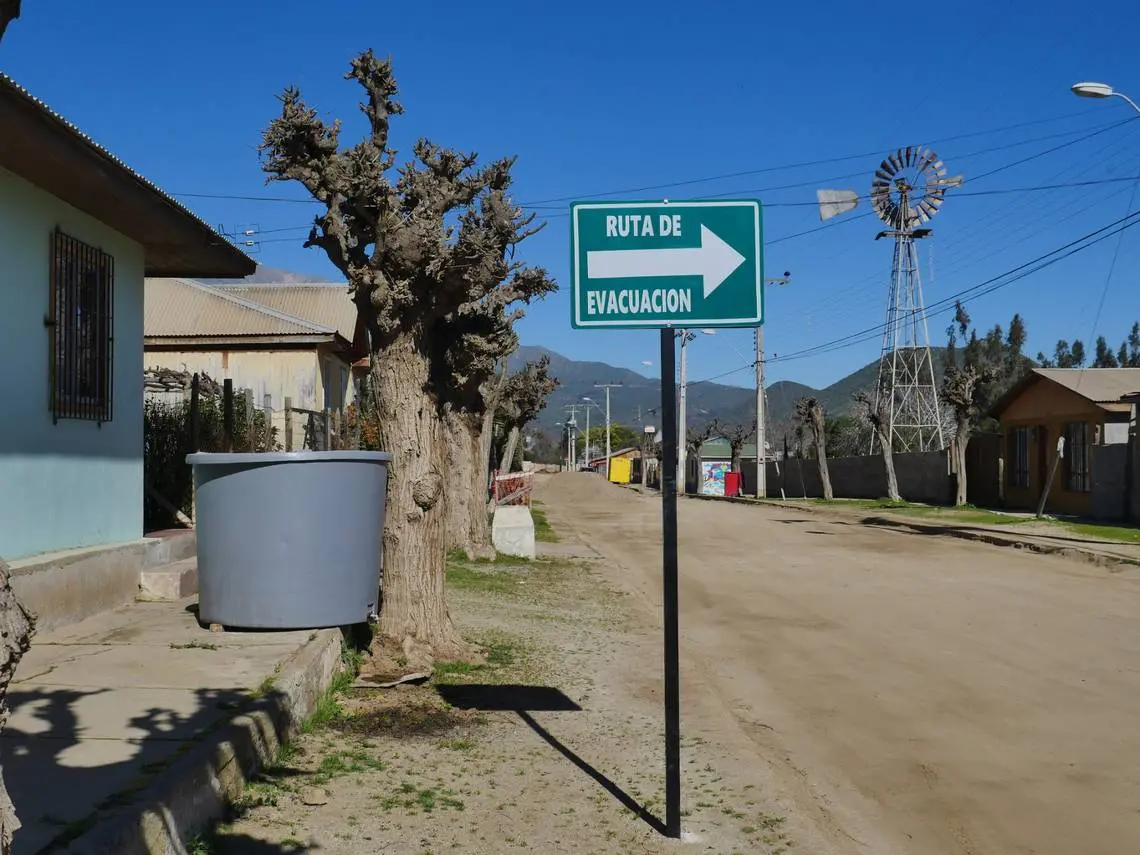
Instead, Los Pelambres took out a $50 million insurance policy for the community, in place until the operation of the dam ceases, installed an early warning sound alarm, created surveillance shifts, and arranged transportation for evacuation and other emergencies, among other measures. In 2015 the dam withstood an 8.3 magnitude earthquake nearby, but for residents, nothing completely erases the risks that will mark the Pupio valley for as long as the Mauro dam exists. All throughout the village, there are now signs with arrows pointing in the direction to flee.
“We have never felt safe,” says Angelo Ardiles. “No one has, not in this community.”
A DRIED-UP RIVERBED
Alvaro Badillo is still raising his family in Caimanes, despite the ongoing challenges of living near the tailings dam, such as dealing with the cloud of allegedly toxic dust that swept in from the dam last year, covering the village. Antofagasta says that the dust did not exceed air quality standards, but Chilean courts ordered an investigation following a lawsuit from Caimanes residents.
It’s one of several active legal cases. Badillo and the Committee for the Defense of Caimanes, which represents around 100 villagers, are suing Los Pelambres to compensate them for the negative psychological impacts of the social conflict, years of activism and the presence of the dam. The goal is for residents to receive enough money so that those who want to can afford to relocate elsewhere, and to ensure safety and quality of life for those who choose to stay.
Badillo keeps all the photos of the years of activism against Los Pelambres on his hard drive. These images and videos have since been used to bolster the lawsuits, and Badillo feels the pictures of the Pupio are proof that at least he fought for something, even if it is now gone.
“I used to take photos of all the young people swimming and bathing in the river without thinking that years later, when we no longer had water, these would serve as a record,” Badillo recalls.
Reflecting on the “compromise of dreams and soul” his former lawyers foreshadowed in the agreement, Badillo explains how his son has only ever known the Pupio as a dried-up riverbed.
“Some of the others, they sold their heart, their soul for money and I think they know it,” Badillo says. “I think they have shame.”


